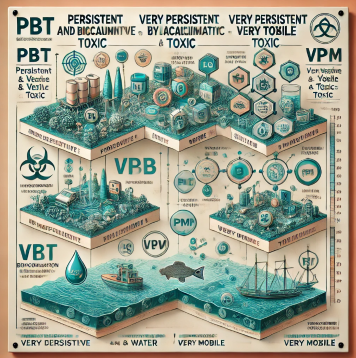Delegated Regulation (EU) 2023/707 introduced four new hazard classes:
- Endocrine disruption for human health: ED HH1, ED HH2
- Endocrine disruption for the environment: ED ENV1, ED ENV2
- Persistent, bioaccumulative, and toxic or very persistent and very bioaccumulative properties: PBT, vPvB
- Persistent, mobile, and toxic or very persistent and very mobile properties: PMT, vPvM
The updated CLP Regulation specifies, for each hazard class, its definition, the criteria for classification of substances, the concentration limits for the classification of mixtures, and information on the hazards of the substance or mixture. The corresponding hazard class and category codes are listed in Table 1.1 of Part 1 of Annex VI to the CLP Regulation.
The relevant sections of the Guidance on the Application of the CLP Criteria have also been updated: Part 3.11 (Endocrine Disruption for Human Health), Part 4.2 (Endocrine Disruption for the Environment), and Part 4.3 (PBT/vPvB and PMT/vPvM). These sections are now organized into five separate documents for easier and faster reference.

New Hazard Statements Applicable in the EU
| Hazard Class and Category Code | Hazard Statement Code | Hazard Statement |
| ED HH 1 | EUH380 | May cause endocrine disruption in humans |
| ED HH 2 | EUH381 | Suspected of causing endocrine disruption in humans |
| ED ENV 1 | EUH430 | May cause endocrine disruption in the environment |
| ED ENV 2 | EUH431 | Suspected of causing endocrine disruption in the environment |
| PBT | EUH440 | Accumulates in the environment and living organisms including in humans |
| vPvB | EUH441 | Strongly accumulates in the environment and living organisms including in humans |
| PMT | EUH450 | Can cause long-lasting and diffuse contamination of water resources |
| vPvM | EUH451 | Can cause very long-lasting and diffuse contamination of water resources |
The Regulation has been in effect since 20 April 2023, however, transitional periods apply for fulfilling classification obligations. During these periods, manufacturers, importers, downstream users, and distributors of substances and mixtures may classify their substances or mixtures into the new hazard classes on a voluntary basis.
For new substances placed on the market, the transitional period has already ended, and classification into the new hazard classes is mandatory. For substances placed on the market before 1 May 2025, the new classification and labelling requirements apply from 1 November 2026.
For new mixtures, the deadlines for mandatory classification are extended to May 2026. Mixtures placed on the market before 1 May 2026 must comply with the new classification requirements from 1 May 2028.
At the end of the transitional periods, all manufacturers, importers, downstream users, and distributors are required to apply the new hazard classes.
SUBSTANCES

MIXTURES

The deadlines for fulfilling obligations, as well as the end of the transitional period for substances already on the market, are approaching. Companies therefore need to review their substances and determine whether they should be classified under any of the new hazard classes.
Determining the correct classification can be complex and requires time and expertise, both for substances with extensive data and for substances where data are limited and need to be generated.
Ekotox Centres provide support for classification into the new hazard classes, as well as assistance with meeting subsequent obligations in accordance with the CLP and REACH Regulations.